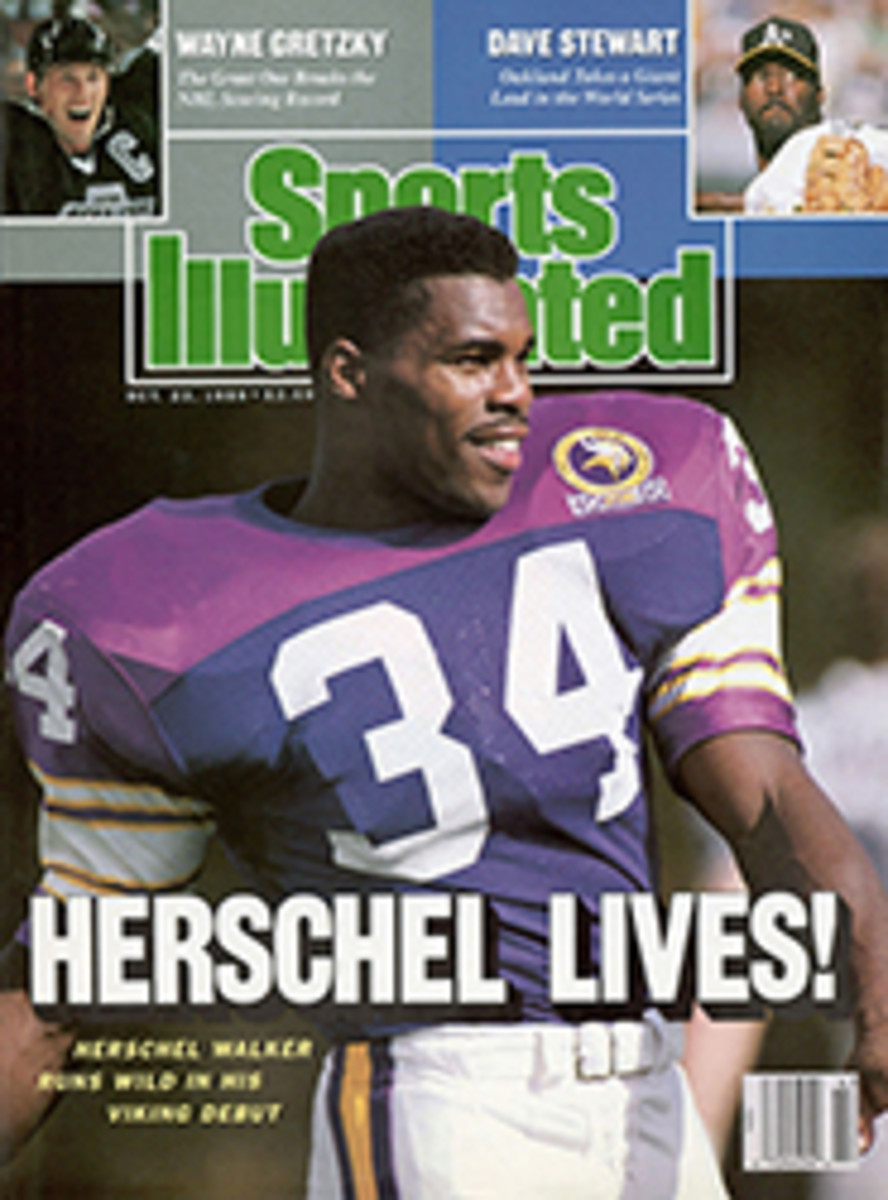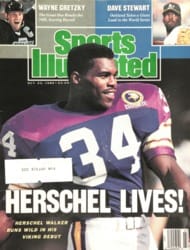
BY ANY NAME, IT'S HARD TO HIT
After watching Dave Stewart and then Mike Moore dominate his Giants, manager Roger Craig shook his head and said, "They're awfully good, aren't they? And they can sure throw that split-finger."
It was Craig who, as the Detroit Tiger pitching coach in the early 1980s, became the evangelist of the split-fingered fastball. Oakland pitching coach Dave Duncan is another devotee of the pitch, which he prefers to call the forkball. With both pitching staffs mixing the split-finger heavily into their repertoires, the Battle of the Bay quickly became the Fracas of the Forkball.
In the first two games, it was the Athletics who threw it best. "Stewart is an artist with that thing," said Craig, who watched the A's ace throw 41 forkballs—28 for strikes—in Game 1. The next night, Moore threw 42 splitters, 29 for strikes. On the biggest pitch of the game, in the third inning with the score tied 1-1 and Brett Butler at third, Moore struck out Will Clark with a split-finger to end the inning. "Until I came up with the forkball in spring training," said Moore, "I never would have had a way to strike out a Will Clark in that situation."
There's still confusion over the correct name of the pitch. "A true forkball is jammed far back into the fingers and cannot be thrown hard," says Craig. "But with the split-finger, you spread your fingers as far apart as you want and just throw your fastball. That's what makes it so great. It's the same arm action, and it looks like a fastball, then drops."
Duncan may call them all forkballs, but he knows they come in a wide variety. "The forkball is a highly individualistic pitch," he says. "Everyone throws it differently, according to the length of his fingers, his hand position and the way the ball rolls off his fingers. But it's a lot easier to teach than a straight changeup. Hard throwers sometimes take two or three years to learn a changeup, and a lot of times it'll mess up their delivery."
Moore, whom the A's signed last November as a free agent, arrived in spring training with what Duncan describes as "a horrible changeup." But one day, Duncan spotted Moore fiddling with a forkball grip. "I see what it's done for Stew," Moore told Duncan. "I'd like to try it." He did and went from being a 9-15 hard thrower to a 19-game winner who was third in the league in ERA.
Moore, Bob Welch and Storm Davis of the A's throw a similar pitch: fingers split moderately outside the seams. "Mine is more of a real forkball," says Stewart, "because I jam the ball deeper between my fingers. I have three or four different ways of using it, so it's like having several other pitches. I can change speeds, I can make it run in or out. It's a constant creative process."
The forkball, or split-finger, or whatever you want to call it, has a few alleged drawbacks. One is the charge that the pitch ultimately hurts the arm. "That's such baloney," says Duncan. "The fork-ball causes very little arm strain if thrown right. It strains the fingers, which is why we're working on exercises to strengthen the finger muscles."
Another criticism of the pitch is that it's tough to catch: A hard forkball will sometimes dive sharply at the end. It's no coincidence that Moore was second in the American League in wild pitches with 17. "Never underestimate the importance of our catchers, Terry Steinbach and Ron Hassey," says Stewart. "If you're going to throw it hard enough so it doesn't hang, you can't be afraid that your catcher won't block it." Moore's whiff of Clark came after a forkball in the dirt allowed Butler to get to third. Said Duncan, "Moore's coming back with that pitch says as much about Steinbach as it does about Moore."
PHOTO
RONALD C. MODRA
Stewart's grip is that of a classic forkballer, with the ball deep between the fingers.

